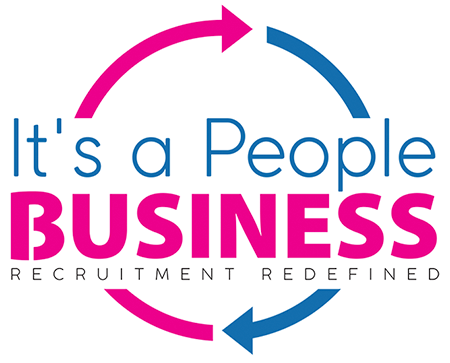
In today's rapidly-evolving job market, attracting and retaining top talent can be a significant challenge for organizations of all sizes. While traditional recruitment strategies often focus on hiring outside talent, an increasing number of companies are recognizing the value of investing in their existing workforce through internal mobility programs. These programs allow employees to explore new career opportunities within their current organization, providing them with the chance to gain new skills and take on different responsibilities. Not only can this lead to increased job satisfaction and engagement, but it can also save companies significant time and money in the recruitment process. By leveraging existing talent pools, internal mobility programs promote retention and reduce the costs associated with hiring and onboarding new employees.
Encourage existing employees to apply for new roles and grow within the company
However, despite the many benefits of internal mobility programs, some organizations may be hesitant to implement them due to concerns about cost and logistics. In this blog post, we'll explore why internal mobility programs are a cost-effective recruitment strategy and how they can benefit both employers and employees. From increased employee engagement to improved talent retention and reduced hiring costs, there are a multitude of advantages to investing in internal mobility programs. By encouraging existing employees to apply for new roles and grow within the company, organizations can save money on recruitment and training costs while also building a more skilled and loyal workforce. Furthermore, internal mobility programs can help to foster a culture of continuous learning, development, and career progression, which can in turn boost employee morale and job satisfaction. In short, implementing an internal mobility program can be a win-win for both employers and employees alike, providing a cost-effective and sustainable solution to talent acquisition and retention challenges.
1. Reduce external recruitment costs
1. Reduce external recruitment costs

In recent years, internal mobility programs have gained substantial popularity as a cost-effective recruitment strategy widely embraced by organizations. Among the primary advantages they offer is the significant reduction of external recruitment expenses. By elevating current employees to higher-tier positions, organizations sidestep the financial burdens linked to external recruiting, such as advertising expenditures, pre-employment screening costs, and training investments. Moreover, internal mobility programs serve as a potent tool in curbing turnover rates, as employees are inherently more inclined to remain with an organization that nurtures their potential for career progression.
Save additional costs associated with turnover and training of new employees.
Save additional costs associated with turnover and training of new employees.
This retention, in turn, results in substantial savings by mitigating the expenses associated with employee turnover and the training of new recruits. In essence, internal mobility programs embody a cost-effective remedy within the realm of recruitment strategies. They empower organizations to cultivate their existing talent pool while substantially diminishing the financial outlays tied to external recruitment endeavours. Consequently, they stand as an astute and sustainable approach for organizations seeking to optimize their human resources while ensuring fiscal prudence.
2. Retain top talent
2. Retain top talent
One of the key benefits of implementing an internal mobility program in your organization is the ability to retain top talent. Cost-effective recruitment strategies should not only focus on attracting new talent, but also on retaining the valuable employees you already have. By providing opportunities for career growth and development within your organization, you can increase employee engagement and job satisfaction.
Read More: The Future of Work: Predictions for Online Recruitment in the Next Decade
Employees who feel valued and have clear paths for advancement are more likely to stay with their current employer, reducing turnover costs and the need to constantly recruit and onboard new employees. In addition, retaining top talent can lead to increased productivity and better overall performance, as experienced and skilled employees are able to contribute to the success of the organization.
3. Increase employee engagement
3. Increase employee engagement

Internal mobility programs offer a multitude of advantages, with a prominent one being their capacity to elevate employee engagement—an invaluable asset for any organization. Extensive research underscores the link between engagement and productivity, lower absenteeism rates, and employee retention. This correlation directly translates into cost-effectiveness in recruitment, as the expense of replacing disengaged staff can be exorbitant. The implementation of internal mobility programs affords employees the opportunity to explore fresh roles within the organization, nurturing elevated job satisfaction and motivation. Furthermore, these initiatives serve as a mechanism to pinpoint and retain high-performing individuals who might otherwise seek opportunities elsewhere.
Identify and retain top performers who may otherwise seek opportunities elsewhere
In essence, internal mobility programs contribute to fostering a positive work culture, nurturing employee development, and curbing turnover costs—a trifecta of benefits that ultimately augments the organization's bottom line. In summary, the far-reaching impact of internal mobility programs encompasses the cultivation of a dynamic and engaged workforce, the fortification of employee growth trajectories, and the mitigation of turnover-related expenses, all of which collectively bolster the financial health of the organization.
Read More: Outsourcing vs. In-House Hiring: Which is Right for Your Business?
4. Improve overall productivity
4. Improve overall productivity

Internal mobility programs can prove to be a cost-effective recruitment strategy for organizations. In addition to providing career growth opportunities for existing employees, these programs can help improve overall productivity within the company. When employees are able to move within different departments and roles, they gain a deeper understanding of the organization's overall operations and goals. This understanding leads to increased collaboration and communication between departments, which can result in higher productivity levels.
Read More:How to Use Social Media to Recruit and Engage Top Talent
Have a positive impact on the overall productivity
Have a positive impact on the overall productivity
Furthermore, when employees are given the chance to learn new skills and take on new responsibilities, they become more motivated and engaged in their work. This increased engagement can have a positive impact on the overall productivity and bottom line of the organization. By implementing internal mobility programs, companies can not only save on recruitment costs, but also create a more productive and engaged workforce.
5. Boost employer brand perception
5. Boost employer brand perception
Elevating employer brand perception constitutes a pivotal facet of any cost-effective recruitment strategy. One potent approach to achieve this is through the implementation of internal mobility programs, which serve as a tangible testament to an organization's unwavering commitment to nurturing employee development and progression. This, in turn, serves as a magnet for top-tier talent. When employees witness their company's profound dedication to their professional growth and discern opportunities for career advancement, job satisfaction and engagement naturally ensue. Furthermore, the potency of word-of-mouth as a recruitment tool comes into play. Employees who feel cherished and supported are inclined to share their positive experiences within their networks.
Word of mouth is a powerful tool in recruitment
Word of mouth is a powerful tool in recruitment
This ripple effect generates heightened interest in the organization as a coveted employer, thereby fostering a larger pool of adept candidates eager to fill open positions. In essence, internal mobility programs are not just conduits for employee development but also strategic instruments for enhancing employer brand perception. By nurturing an environment of growth and recognition, organizations can effectively cultivate a reputation that resonates with top talents, fortifying their position as a preferred destination for prospective employees.
Conclusion
Conclusion
Internal mobility programs are a cost-effective recruitment strategy that can save organizations both time and money while increasing employee engagement and retention. By identifying promising employees and providing them with opportunities for growth and development, companies can ensure a steady pipeline of talent and reduce the need for costly external hiring. Additionally, internal mobility programs can boost morale and job satisfaction by giving employees a sense of purpose and ownership over their career paths. Investing in these programs can yield significant benefits for both employees and employers in the long run.
